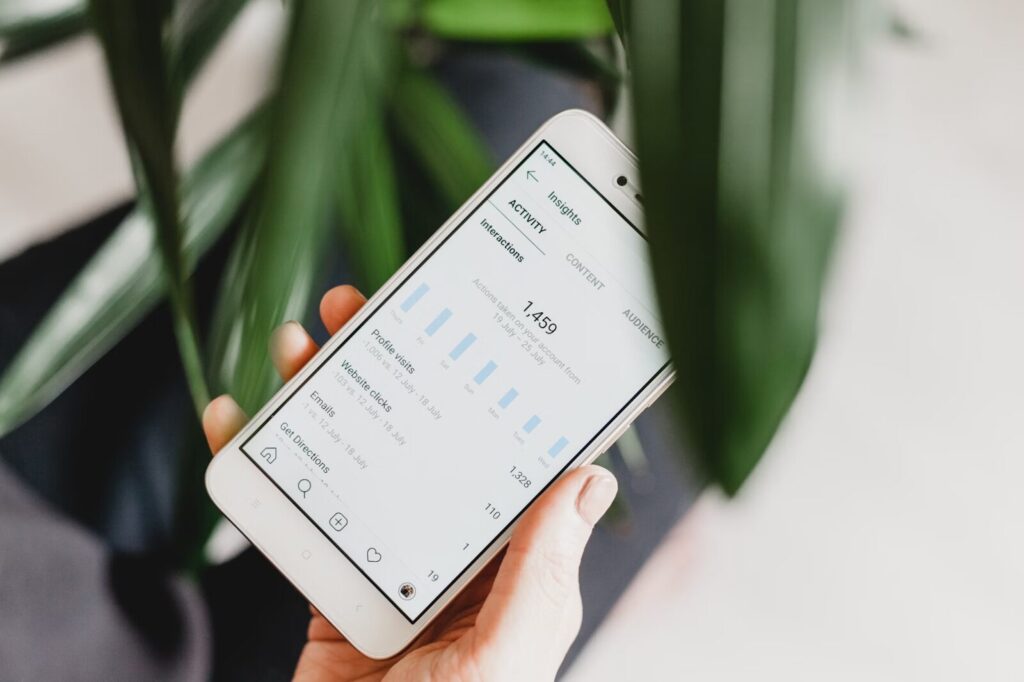Most people are so overexposed to traditional selling techniques they’ve become masters at tuning them out. Cold calls are immediately blocked, and generic email blasts get left unread in the depths of countless inboxes. It is the old adage of throwing mud at a wall and hoping something sticks – wearying for both the seller and the buyer.
A more respectful and targeted approach is needed, and that’s the purview of signal-based selling. Rather than casting a wide net, this technique zeroes in on the most promising buyer candidates. It means monitoring customer behavior to know when to contact them with a personalized approach.
This can do wonders for sales conversion rates. In this article, we will cover every aspect of signal-based selling to help you leave the guesswork behind and start leveraging a data-backed approach that works.
Try QuotaPath for free
Try the most collaborative solution to manage, track and payout variable compensation. Calculate commissions and pay your team accurately, and on time.
Start TrialWhat Are Buying Signals?
They are the digital clues potential customers leave online, giving you the heads-up that they’re interested in buying what you’re selling. They come in numerous forms, each offering insight into where they might be in their journey to becoming a paying customer.
Some signals indicate a much stronger intent to purchase than others, and therein lies the beauty of signal scoring. Assigning numerical values to different signals means you can prioritize effectively and focus on the most promising prospects, especially when you want to speed up your inbound lead response time.
For example, a demo request, which signifies a very high interest in your product, might be worth 10 points. On the other hand, attending a webinar, which isn’t such a strong signal, might be worth 5 points.
With this approach, you can build a hierarchy of signals, giving your sales team a solid framework to prioritize leads. What point values you assign is highly dependent on your industry and sales cycle, but the principle is always the same: focus on those signals that will most likely lead to a conversion. Let’s look at some examples of common buying signals.
Free to use image sourced from Unsplash
Intent Signals
Intent signals are the clearest indicators that someone is actively seeking a solution to a problem. Suppose, for example, they start using the free teleconference call services that you provide – there are a few signs that may indicate readiness to upgrade to your paid version.
Have they been consistently using the software for a certain period, demonstrating a reliance on its features? Are they encountering limitations of the free version, such as storage caps or user restrictions? Or, perhaps they visited your pricing page multiple times, comparing features or exploring different plans.
All are strong intent signals that they may be considering upgrading. This is just one example, but other indicators (which website analytics can provide) include when someone lingers on some specific web pages, like pricing or case studies.
Engagement Signals
How are prospects interacting with your brand across multiple channels? While engagement signals are not as strong an indicator of purchase intent as intent signals, they are still good barometers of a prospective customer’s interest.
For example, TikTok has emerged as a potent marketing platform, enabling brands to engage with audiences in dynamic and interactive ways, which can strongly signal a prospect’s interest.
If a prospect takes the time to open your emails and links regularly, you know they’re engaging more than someone just glancing at the subject line. Likewise, if they share your LinkedIn posts or comment on your Instagram page, it’s a good sign they’ve got a deeper level of interest in – or, at least, connection with – your brand.
Keeping track of these metrics allows you to better grasp a prospect’s engagement level and make decisions about follow-up communications accordingly. As a result, you have a better chance of putting your efforts in the right places and converting new customers.

Demographic/Firmographic Signals
Targeting the most promising prospects is easier when you clearly understand who they are and what they want.
Take, for instance, an online recruitment platform that offers a premium membership for job seekers, which includes job hunting extra features and tools that help to build a portfolio and create a CV. In this case, signals like a user’s recent graduation date, years of experience, or current job title can indicate their career stage and aspirations.
A recent graduate might be more interested in entry-level positions and career guidance, while a seasoned professional might seek executive roles or career advancement opportunities. With these demographic signals, it’s possible to tailor messaging effectively so the most relevant features and benefits are pitched for each user segment.

How and When to Churn Customers & Prospects
There are no ‘bad’ customers, but there are some that are simply not a good fit.
Read MoreNegative Signals
Not every lead will work out, so it’s helpful to gauge when the time is right to churn customer prospects. Negative signals can help, raising red flags that save you from wasting valuable time and resources on a lost cause.
If a prospect never opens your emails, that’s a good indicator that their interest is minimal. Likewise, if they frequently leave your landing pages shortly after arrival, resulting in a high bounce rate, you know the content isn’t grabbing their attention.
Monitoring these and other negative signals can help you eliminate leads that are unlikely to convert, allowing you to focus your energies on those who are genuinely interested in what you have to offer.
Streamline commissions for your RevOps, Finance, and Sales teams
Design, track, and manage variable incentives with QuotaPath. Give your RevOps, finance, and sales teams transparency into sales compensation.
Talk to SalesBuilding Your Signal-Based Selling Framework
A successful signal-based selling strategy requires synchronizing your sales efforts with your customer’s buying journey. This framework involves three key steps: refining your ideal customer profile, selecting the right signal sources, and defining a dynamic sales playbook.

Step 1: Identify Your Ideal Customer Profile (ICP)
Who is your ideal customer? You need to know this if you want to achieve optimal signal-based selling. This means building a more detailed picture than basic demographics, such as industry and company size.
Take a look at how your successful conversions came about. What actions did those customers take before purchasing? For example, did they spend a lot of time on particular pages? This knowledge will help you uncover those signals that represent a high intent to buy.
On the other hand, while you can learn a lot from your successes, you can learn just as much from those times when things didn’t work out. Analyze past times when you almost closed the deal, were there any negative signals? Or, any similarities among those leads who failed to convert? Use this information to refine your ICP and stop wasting time on the wrong prospects.
Step 2: Choose Your Signal Sources
The modern sales tech stack offers a variety of tools to capture and analyze buying signals to boost sales effectiveness. Each tool has its strengths and weaknesses, so it’s important to choose the right combination for your specific needs and goals.
Marketing Automation Platforms: Track website activity to capture intent signals, such as page views and downloads, with platforms like Marketo and HubSpot.
Sales Intelligence Tools: Get an insider view with tools like ZoomInfo and LinkedIn Sales Navigator, which monitor company and contact data, such as job changes and funding rounds.
Intent Data Providers: Platforms like Bombora and G2 aggregate data from various sources to highlight companies actively researching specific topics or solutions.
Internal Data: Your CRM system is a treasure trove of customer data. Make sure your data is clean and integrated with other systems for signal-based selling to be most effective.

Step 3: Define Your Sales Playbook
Your sales playbook should be tailored to your ICP and sales cycle, guiding how your team responds to different buying signals. If you offer a communications platform, a high-intent signal like an online video meeting booking for a video conferencing tool should trigger an immediate and personalized outreach.
Meanwhile, other signals, like a white paper download, might start a nurture email sequence, providing additional content and inviting the prospect to related events. What you need is a playbook that is both comprehensive and flexible, so your team can respond effectively to a wide range of signals.
As you understand how signal-based selling works in your company and learn the best approach, you can keep refining your playbook to reflect your customers’ needs and behaviors.
Implementing Signal-Based Selling in Practice
Having a plan and the right tools is only the start; next, you have to put it all into practice. Here’s what you need to know about weaving signal-based selling into your sales and marketing operations.
Technology Integration and Reliable Data
For signal-based selling to achieve its potential, you need data to flow uninterrupted to wherever it’s needed. This often involves using APIs or custom tools to automate the flow of data so your sales team has the relevant information at their fingertips. However, some difficulties can crop up.
For example, potential data silos not only make internal audit functions more challenging but also make it difficult to consolidate and analyze information for signal-based selling.
Inconsistent data formats can also hinder smooth integration. To ensure reliability and accuracy, your data needs careful cleaning and standardization so that all data points are in a consistent format and structure.

Sales Team Alignment
When you first introduce signal-based selling, there’s a chance you may encounter some resistance from the sales team. The best way to combat this is to engage openly with any concerns and clearly communicate the potential benefits.
If your team understands how much more efficient signal-based selling is and that it generates higher-quality leads, they’ll be more likely to fully adopt it. Training is also integral to team adoption so they feel confident about different signal sources and the new playbook for taking action.
Content Strategy
Think creatively and branch out from simple lead magnets; consider interactive content like calculators, quizzes, or assessments that capture valuable intent signals.
Tailor website content based on visitor behavior, use data to personalize your email subject lines, and serve recommendations that will nudge them closer to the sales finish line.

Maximizing Sales Team Productivity with QuotaPath: A Comprehensive Guide
79% of sales executives agree that the key to achieving key targets lies in one crucial factor: improving sales team productivity.
Read MoreAdvanced Signal-Based Selling Techniques
These are the cutting-edge technologies that take signal-based selling to another level – and boost your conversion rates.
Predictive Analytics
You may already be using the best outbound call center software, but if you’re not using the data you gather from it, it won’t be much use. To remedy this, start leveraging technologies such as AI-powered predictive analytics.
Machine learning algorithms make short work of analyzing vast amounts of signal data and can help you build a more accurate sales pipeline forecast. This can make it even easier to detect the potential customers who are most likely to convert so that you can focus your efforts wisely.
However, it’s important to remember that these algorithms are by no means perfect. They are a great tool to help inform your decision-making, but they should not replace it. Human judgment and intuition are necessary for interpreting data and making sound sales decisions.

Account-Based Marketing (ABM)
Account-based marketing, supported by business marketing software tools, targets specific, high-value accounts with personalized campaigns. Incorporate buying signals into your ABM strategy to further tailor your message and outreach.
This will enable you to target specific stakeholders within an account based on their signals. Tools like 6sense and Terminus combine ABM and signal-based features, allowing you to orchestrate highly targeted campaigns that resonate with your ideal customers.
Real-Time Personalization
When you have plenty of rich signal data, one of the quickest ways to use it is with real-time personalization. Integrate website personalization tools, such as Optimizely or VWO, with your intent data and other signal information. You will then be able to serve your website visitors with content that is most appealing to them.
This level of personalization also means more engagement and, subsequently, more conversions. However, it’s important to strike a balance between personalization and respecting user privacy. Be clear about how you’re using data and always provide the choice to opt out of tracking if they wish.
Signal-Based Selling: Watch Your Conversion Rates Soar
Wasting time on dead ends and fruitless prospects was once inevitable for any sales team. However, while sales work will never mean a 100% success rate, you can greatly improve your conversion odds with signal-based selling.
This technique gives you the data you need to make the right decisions at the perfect time, targeting the most likely potential buyers just when they are ready to bite. It means less time chasing the wrong leads and conversion rates that trend upwards.



